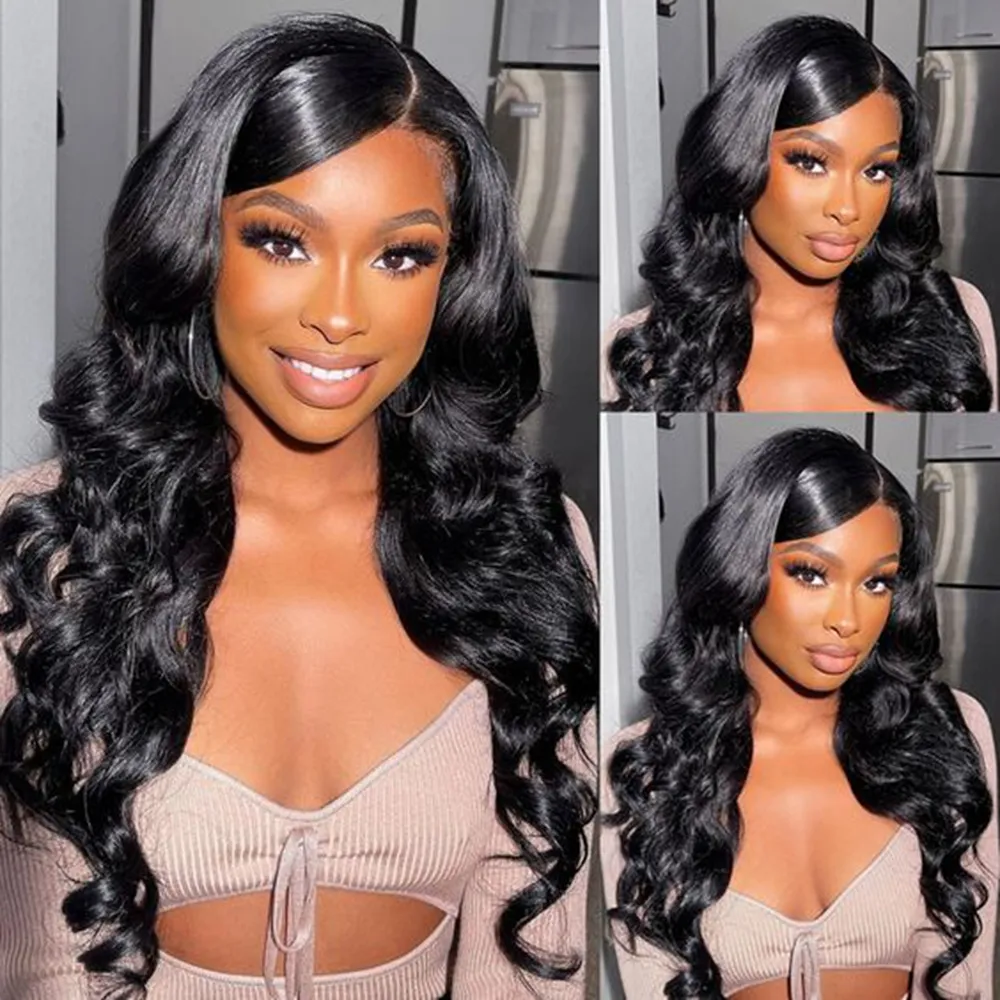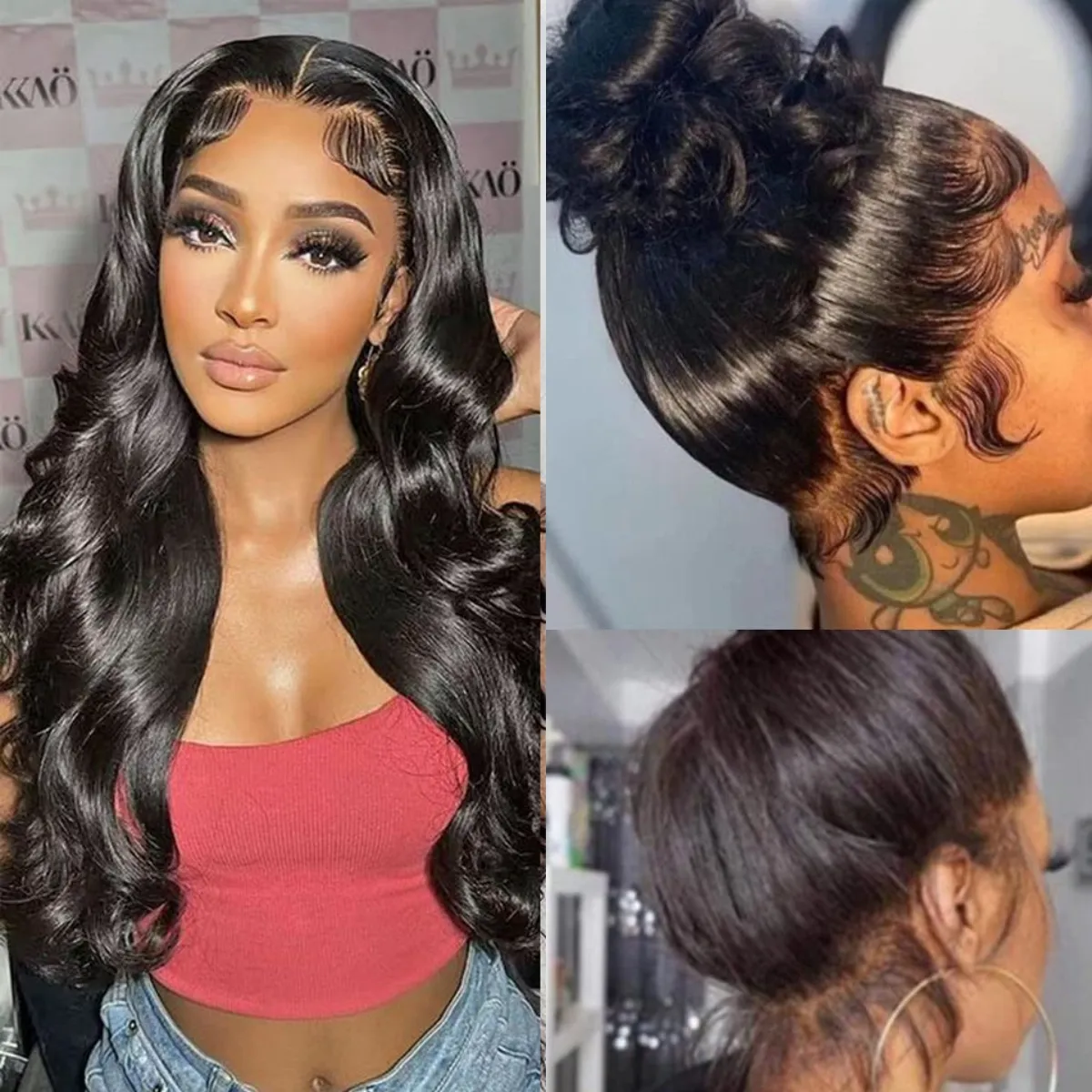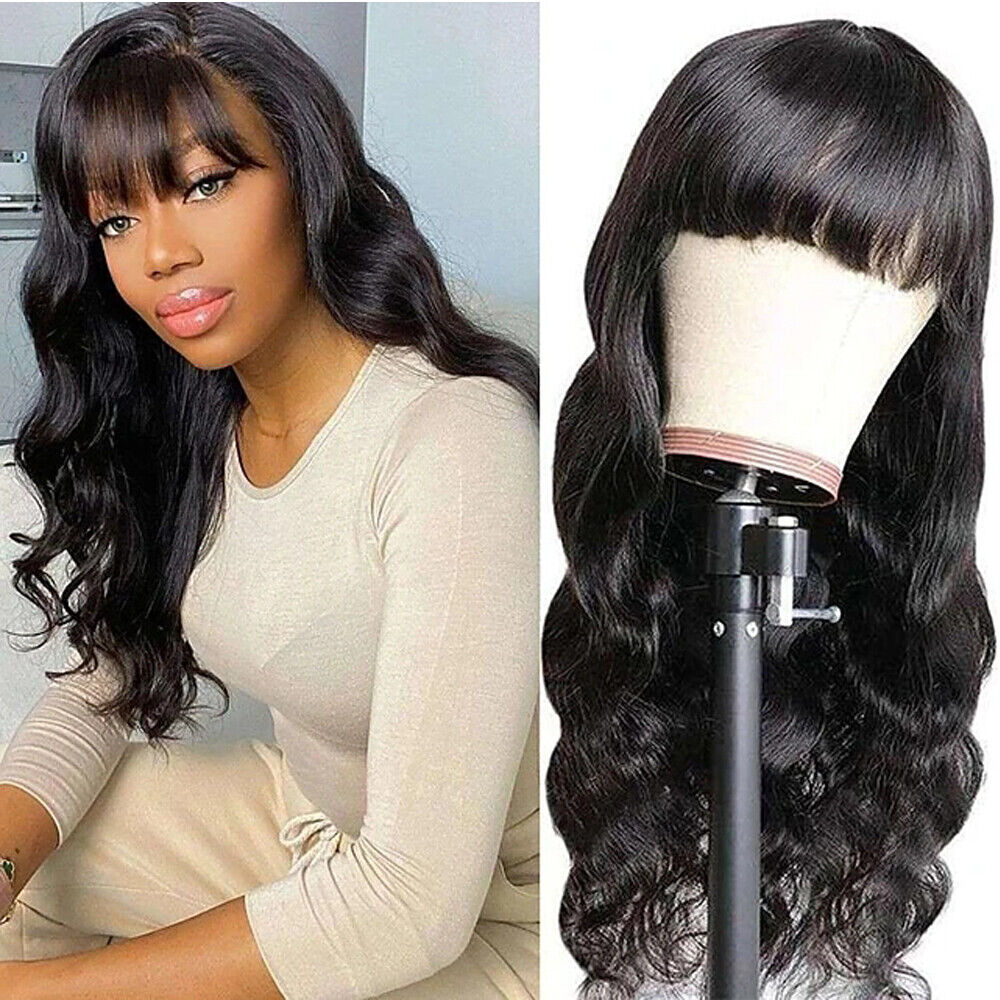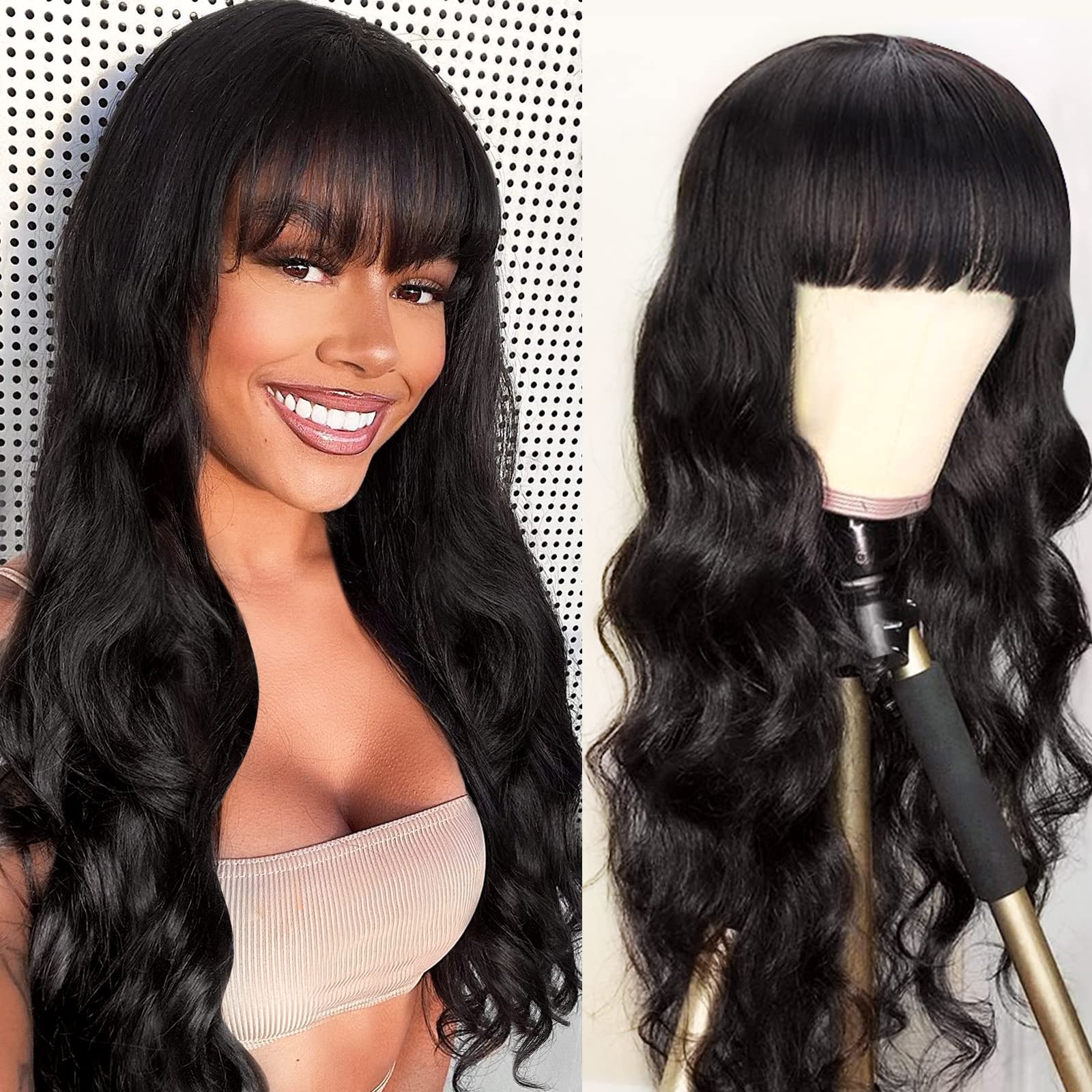
The Ultimate Guide to Black Wigs: Versatility, Style, and Care
Introduction
Black wigs offer endless possibilities for style and self-expression. They suit various occasions and complement diverse looks. This comprehensive guide explores everything about black wigs. Discover the types, styling techniques, and maintenance tips. Learn how to choose the perfect black wig for any need.
Types of Black Wigs
Human Hair Wigs
Human hair black wigs provide the most natural look and feel. They come from real human hair, often sourced ethically. These wigs offer versatility in styling. Heat tools work well on human hair wigs. They can be curled, straightened, or dyed like natural hair. Human hair wigs move and bounce realistically. They blend seamlessly with the wearer’s own hair. High-quality human hair wigs can last for years with proper care. They suit those seeking the most authentic wig experience.
Synthetic Wigs
Synthetic black wigs offer affordability and low maintenance. They come pre-styled and hold their shape well. Modern synthetic fibers mimic the look of real hair closely. These wigs resist humidity and maintain their style in various conditions. Synthetic wigs require less styling time than human hair options. They come in a wide range of styles and lengths. Some high-quality synthetics allow for limited heat styling. Synthetic wigs suit those seeking convenience and consistent style.
Lace Front Wigs
Lace front black wigs create a natural-looking hairline. They feature a sheer lace panel at the front. This panel allows for styling away from the face. Lace front wigs blend seamlessly with the wearer’s skin. They create the illusion of hair growing from the scalp. These wigs offer versatility in parting and styling. They come in both human hair and synthetic options. Lace front wigs suit those prioritizing a natural appearance.
Full Lace Wigs
Full lace black wigs provide the most styling flexibility. The entire wig cap consists of lace material. This allows for parting and styling in any direction. Full lace wigs create a completely natural look. They can be worn in high ponytails or updos. These wigs often use high-quality human hair. They require careful application and maintenance. Full lace wigs suit those seeking maximum versatility and realism.
Choosing the Right Black Wig
Selecting the perfect black wig requires consideration of several factors. Consider the intended use and frequency of wear. Daily wear demands durability and ease of maintenance. Occasional use allows for more delicate or elaborate styles. Evaluate the desired level of styling versatility. Human hair offers more styling options but requires more care. Synthetic wigs provide convenience but limit styling possibilities.
Consider face shape when choosing a wig style. Round faces benefit from wigs with volume at the crown. Oval faces suit most wig styles. Square faces look great with wigs featuring soft layers. Heart-shaped faces pair well with wigs that add width at the jawline. Choose a wig density that matches personal preference and natural hair. Lighter densities offer a more natural look. Heavier densities provide fullness and drama.
Examine the cap construction for comfort and security. Capless wigs offer breathability for all-day wear. Monofilament caps create a natural-looking scalp. Wefted caps provide affordability and lightweight comfort. Ensure the wig size matches head measurements accurately. Many wigs come with adjustable straps for a customized fit. Consider the maintenance requirements and available time for care. Some wigs demand daily styling, while others remain low-maintenance.
Styling Black Wigs
Black wigs offer versatile styling options. Start with basic maintenance to keep the wig looking fresh. Gently brush the wig from ends to roots to detangle. Use a wide-tooth comb for curly or textured wigs. Apply heat protectant before using styling tools on human hair wigs. Synthetic wigs require specialized heat-friendly products. Experiment with different partings to change the wig’s look. Side parts add volume, while center parts create symmetry.
For straight wigs, use a flat iron to add sleekness. Curl sections with a curling iron for added texture. Texturizing spray adds volume and movement to the style. For curly wigs, define curls with a curl-enhancing product. Use a diffuser attachment when blow-drying to maintain curl pattern. Pin curls overnight create long-lasting, heat-free curls.
Updos work well with longer black wigs. Try a sleek bun for a polished look. Braided styles add interest and keep hair off the face. Half-up styles offer versatility for various occasions. Accessorize with headbands, clips, or decorative pins. These add personal flair to any wig style. Remember to style gently to preserve the wig’s integrity. Avoid pulling or tugging excessively on the hair fibers.
Maintaining Black Wigs
Proper maintenance extends the life and appearance of black wigs. Wash human hair wigs every 10-14 wears or when product buildup occurs. Use sulfate-free shampoo and conditioner designed for wigs. Gently cleanse in cool water, moving in a downward direction. Avoid rubbing or twisting the hair to prevent tangling. Rinse thoroughly and apply a leave-in conditioner for added moisture.
Synthetic wigs require washing every 15-20 wears. Use specialized synthetic wig shampoo and cool water. Gently swish the wig in the water without rubbing. Rinse until the water runs clear. Apply synthetic wig conditioner to maintain softness. Air dry wigs on a wig stand away from direct heat or sunlight. Never sleep in a wig to prevent tangling and matting.
Store wigs properly when not in use. Use a wig stand to maintain the wig’s shape. Cover the wig with a silk or satin scarf to prevent dust accumulation. Keep wigs away from heat sources and direct sunlight. Avoid storing in plastic bags, which can trap moisture. Rotate between multiple wigs to extend their lifespan. Regular maintenance ensures black wigs remain beautiful and wearable.

Customizing Black Wigs
Customization allows black wigs to match personal style perfectly. Trim the wig for a personalized fit and style. Use sharp, high-quality scissors for precise cuts. Cut small sections at a time to avoid mistakes. Layer the hair for added movement and dimension. Thin out bulky areas with thinning shears for a natural look. Consider professional customization for complex cuts or styles.
Add highlights or lowlights to create depth and dimension. Use temporary color sprays for commitment-free changes. Permanent dye works well on human hair wigs. Consult a professional for significant color changes. Add clip-in extensions for length or volume. Match the extension color and texture to the wig for seamless blending. Experiment with accessories like colored extensions or tinsel strands.
Create a natural-looking hairline on lace front wigs. Pluck the hairline gently to reduce density. Add baby hairs for a realistic edge. Use concealer or foundation to blend the lace with skin tone. Customize the parting by adding concealer to the part line. This creates the illusion of a natural scalp. Customization transforms a basic black wig into a unique, personalized style.

The Cultural Significance of Black Wigs
Black wigs hold cultural importance in various communities. In many African and African-American cultures, wigs offer versatility in hairstyling. They allow for expression of identity and heritage. Black wigs feature prominently in the drag and ballroom cultures. They enable dramatic transformations and character embodiment. In some religious communities, black wigs serve modesty purposes. They allow adherence to religious guidelines while maintaining style.
The film and theater industries rely heavily on black wigs. They transform actors into diverse characters quickly. Black wigs play a role in historical reenactments and cosplay. They help recreate accurate period looks or fictional characters. In the fashion world, black wigs appear on runways and in editorials. They allow for bold, transformative looks without permanent changes.
Black wigs also serve practical purposes for many individuals. They provide coverage for those experiencing hair loss. Cancer patients often use black wigs during treatment. Individuals with alopecia find confidence and versatility in wigs. The cultural significance of black wigs extends beyond mere fashion. They serve as tools for self-expression, identity, and empowerment.
Conclusion: Embracing the Versatility of Black Wigs
Black wigs offer endless possibilities for style and self-expression. They range from natural-looking human hair to convenient synthetic options. Proper selection, styling, and maintenance ensure optimal wig performance. Customization allows for unique, personalized looks. The cultural significance of black wigs highlights their importance beyond fashion. Whether for daily wear or special occasions, black wigs provide versatility and confidence. Embrace the transformative power of black wigs for any style need.



